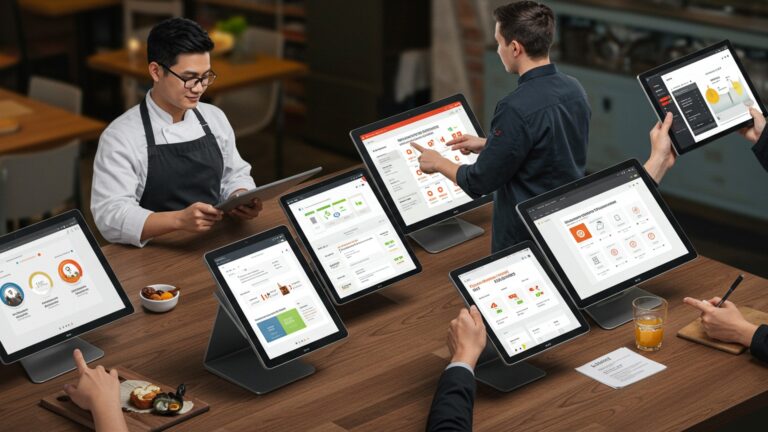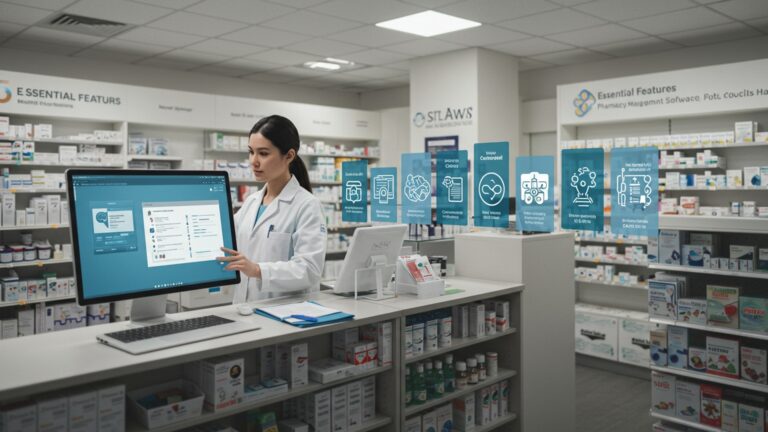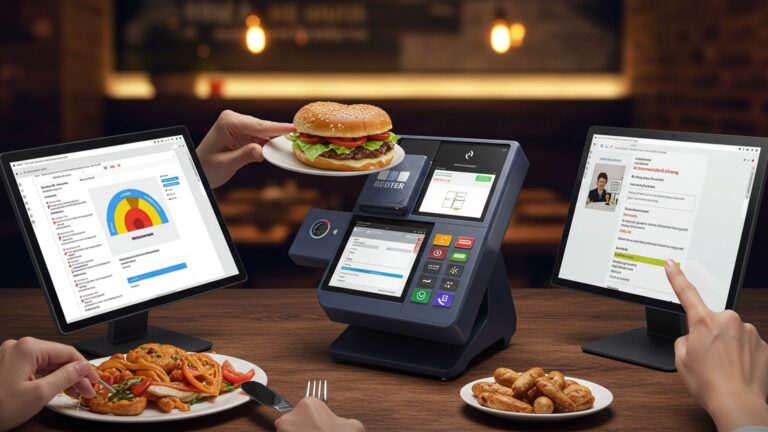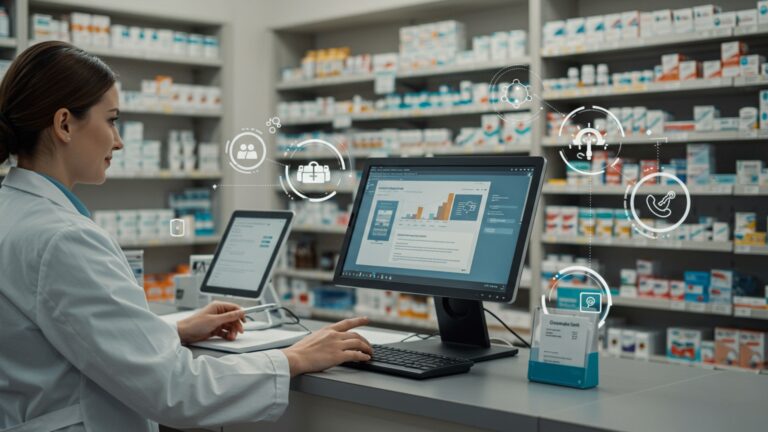Top 6 Pharmacy POS System Benefits for Streamlining Your Operations
Modern pharmacies navigate a demanding operational landscape, constantly balancing precise inventory management for high-demand medications like biologics, intricate insurance reimbursements. the expanding scope of clinical services, including on-site vaccinations. This intricate environment necessitates more than rudimentary transaction processing; it demands a comprehensive digital infrastructure. A robust pharmacy POS system is now pivotal, acting as a central nervous system to streamline workflows from prescription intake and patient data management to automated ordering and compliance reporting. This integration provides pharmacists with real-time insights, significantly reducing errors and freeing up valuable time for enhanced patient care interactions, driving both efficiency and elevated service delivery.
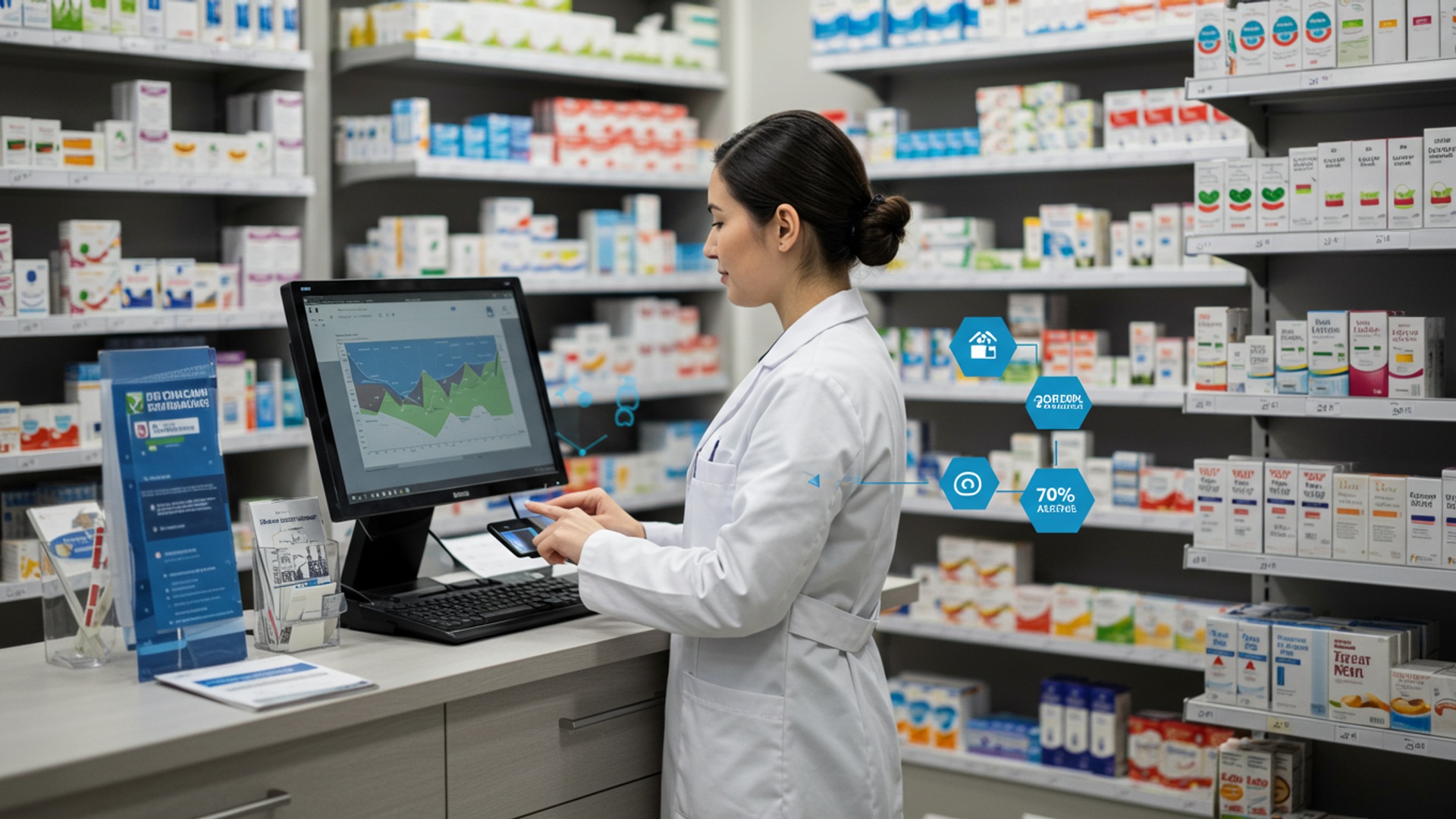
Enhanced Inventory Management and Waste Reduction
One of the most significant advantages for any modern pharmaceutical establishment is the sophisticated inventory control offered by a robust pharmacy POS system. At its core, a pharmacy POS system is a specialized point-of-sale solution designed to meet the unique demands of pharmacies, integrating sales transactions with critical operational functions like stock management, prescription processing. regulatory compliance.
Effective inventory management is paramount in a pharmacy due to the nature of the products: expiration dates, specific storage requirements. the need to track controlled substances. A pharmacy POS system provides real-time visibility into stock levels, enabling pharmacists to know exactly what they have on hand, what’s selling. what needs to be reordered. This precision dramatically reduces the risk of stockouts for essential medications and minimizes waste from expired products.
- Real-time Stock Tracking: Every sale and incoming shipment is automatically recorded, providing an accurate, up-to-the-minute view of inventory. This helps prevent overstocking of slow-moving items and ensures critical medications are always available.
- Automated Reordering: Based on historical sales data and predefined reorder points, the system can automatically generate purchase orders, streamlining the procurement process and ensuring optimal stock levels.
- Expiration Date Management: A key feature unique to pharmacy operations, the system can track lot numbers and expiration dates, alerting staff to products nearing their expiry. This allows for timely rotation of stock or special promotions to move products before they become unsellable, significantly reducing financial losses due to spoilage.
- Controlled Substance Tracking: Compliance with strict regulations (e. g. , DEA requirements in the U. S.) for controlled substances is simplified. The system provides a secure, auditable trail of these medications from receipt to dispense, ensuring accountability and preventing diversion.
For instance, imagine a pharmacy that manually tracks hundreds of different medications. Without a pharmacy POS system, identifying expiring stock or recognizing the need to reorder a fast-moving antibiotic becomes a time-consuming, error-prone task. With a POS system, pharmacists receive proactive alerts, allowing them to manage inventory with precision and confidence. This leads to reduced carrying costs, optimized shelf space. ultimately, a healthier bottom line for the pharmacy.
Streamlined Prescription Processing and Dispensing
The core function of any pharmacy revolves around accurate and efficient prescription processing. A modern pharmacy POS system revolutionizes this process, moving beyond simple transaction handling to become an integrated hub for prescription management. It significantly enhances speed, accuracy. patient safety by automating many steps that were traditionally manual and prone to human error.
Key functionalities include seamless integration with electronic prescribing (e-prescribing) platforms and comprehensive patient profile management. When a prescription is sent electronically, the pharmacy POS system can receive it directly, populate patient data, verify insurance. check for potential drug interactions or allergies against the patient’s record. This dramatically reduces data entry errors and accelerates the dispensing workflow.
- E-Prescribing Integration: Direct receipt of electronic prescriptions from prescribers minimizes transcription errors, improves legibility. speeds up the initial intake process.
- Automated Insurance Verification: The system can quickly verify patient insurance coverage and calculate co-pays, providing transparency to patients upfront and reducing billing disputes.
- Drug Interaction and Allergy Alerts: By cross-referencing new prescriptions with a patient’s existing medication profile and known allergies, the pharmacy POS system provides critical alerts, enhancing patient safety and preventing adverse drug events.
- Refill Management: Patients can request refills directly through integrated portals or the system can proactively remind patients and staff when refills are due, improving patient adherence and pharmacy efficiency.
Consider the contrast:
| Feature | Manual Prescription Processing | Pharmacy POS System Processing |
|---|---|---|
| Prescription Intake | Handwritten script, manual data entry, prone to errors | E-prescribing integration, automated data import, high accuracy |
| Insurance Verification | Manual calls/web portals, time-consuming, delays | Automated real-time verification, instant co-pay calculation |
| Safety Checks | Pharmacist memory/manual checks for interactions | Automated drug interaction & allergy alerts, comprehensive |
| Dispensing Speed | Slower due to manual steps, higher error potential | Faster, guided workflow, reduced dispensing errors |
This streamlining not only benefits the pharmacy by improving workflow and reducing the risk of costly errors but also significantly enhances the patient experience through shorter wait times and increased confidence in the accuracy of their medication.
Improved Customer Service and Patient Loyalty
In today’s competitive healthcare landscape, exceptional customer service is a differentiator. A pharmacy POS system plays a pivotal role in transforming the patient experience, fostering stronger relationships. building lasting loyalty. By centralizing patient data and streamlining service delivery, it allows pharmacy staff to focus more on patient care and less on administrative tasks.
The system enables pharmacies to offer personalized service that goes beyond simple transactions. With quick access to a patient’s purchase history, prescription profile. even communication preferences, staff can provide more informed and empathetic care. This personalized approach not only makes patients feel valued but also ensures that their unique health needs are consistently met.
- Faster Checkout and Reduced Wait Times: Efficient transaction processing, integrated payment options. quick access to patient details mean less time spent at the register, greatly improving patient satisfaction.
- Personalized Patient Profiles: Store vital details such as allergies, preferred communication methods, medication history. even specific requests, allowing staff to offer tailored advice and service.
- Integrated Loyalty Programs: A pharmacy POS system can manage loyalty points, discounts. personalized promotions, incentivizing repeat business and rewarding loyal customers. For example, a system could automatically apply a discount on over-the-counter allergy medication for a patient who frequently purchases related products.
- Automated Communication: Send automated refill reminders, medication pick-up notifications. health tips via SMS or email, keeping patients informed and engaged. improving medication adherence.
According to a survey by the National Community Pharmacists Association (NCPA), patient relationships are a cornerstone of independent pharmacy success. A pharmacy POS system directly supports this by enabling consistent, high-quality interactions. For instance, if a patient frequently purchases specific over-the-counter products for a chronic condition, the system can flag relevant educational materials or offer a targeted discount, demonstrating the pharmacy’s understanding and care for their individual needs. This level of attentiveness transforms transactional interactions into lasting relationships.
Robust Reporting and Business Analytics
Beyond daily operations, a sophisticated pharmacy POS system serves as a powerful business intelligence tool, offering unparalleled insights into every facet of the pharmacy’s performance. The ability to collect, review. interpret vast amounts of transactional and operational data is crucial for strategic decision-making and sustainable growth.
These systems generate a wide array of detailed reports that move beyond simple sales figures. They provide granular data on everything from product profitability and inventory turnover to staff performance and peak sales hours. This data empowers pharmacy owners and managers to identify trends, pinpoint areas for improvement. make informed choices that optimize profitability and operational efficiency.
- Comprehensive Sales Reports: assess sales by product, category, time of day, or staff member to comprehend what’s selling best and when. This can inform staffing schedules and marketing efforts.
- Profit Margin Analysis: Track the profitability of individual medications and products, helping identify high-margin items and areas where pricing strategies might need adjustment.
- Inventory Turnover Rates: interpret how quickly products are moving, which is vital for managing cash flow and preventing dead stock. Low turnover for certain items might indicate a need to adjust purchasing.
- Staff Performance Metrics: Monitor individual employee sales, transaction speed. customer service metrics, which can be invaluable for training, performance reviews. recognizing top performers.
- Prescription Volume Trends: Identify patterns in prescription fills, such as peak times or seasonal variations, allowing for better resource allocation and patient flow management.
For example, a pharmacy might discover through its POS system’s reports that a particular brand of blood pressure medication has a significantly higher profit margin than a generic alternative, even though both sell well. This insight could lead to strategic stocking decisions or focused marketing efforts. Similarly, identifying that Tuesday afternoons consistently have the lowest patient traffic might prompt the pharmacy to schedule staff training or administrative tasks during that period. Without a pharmacy POS system providing these deep analytics, such insights would be difficult, if not impossible, to uncover, leaving critical business decisions to guesswork rather than data-driven evidence.
Regulatory Compliance and Data Security
Operating a pharmacy involves navigating a complex web of stringent regulations, particularly concerning patient data privacy and the handling of controlled substances. A modern pharmacy POS system is engineered to be a cornerstone of compliance, helping pharmacies meet these legal obligations while simultaneously safeguarding sensitive patient and business insights.
Compliance with regulations such as the Health Insurance Portability and Accountability Act (HIPAA) in the U. S. is non-negotiable. A pharmacy POS system helps enforce HIPAA by ensuring patient data is securely stored, accessed. transmitted. It provides robust security features that protect against unauthorized access, data breaches. misuse of protected health data (PHI).
- HIPAA Compliance Features: Implement access controls, audit trails. data encryption to protect patient health insights (PHI), ensuring that only authorized personnel can view sensitive data.
- Controlled Substance Tracking: Beyond basic inventory, the system provides detailed, immutable records for controlled substances, including dispenser, recipient. quantity, crucial for DEA audits and preventing diversion.
- Audit Trails: Every action performed within the system – from prescription entry to inventory adjustments – is logged, creating a comprehensive audit trail that can be invaluable during regulatory inspections or in resolving discrepancies.
- Secure Payment Processing (PCI DSS): Integrated payment solutions within the pharmacy POS system adhere to Payment Card Industry Data Security Standard (PCI DSS) requirements, protecting sensitive credit card insights during transactions.
- User Role Management: Assign specific permissions to different staff members based on their roles, limiting access to only the necessary functions and data, further enhancing security and compliance.
Consider the potential ramifications of a data breach or a failed compliance audit. Fines can be substantial. the damage to a pharmacy’s reputation can be irreparable. By leveraging a pharmacy POS system with built-in compliance features, pharmacies can significantly reduce these risks. For instance, a system that automatically logs every access to a patient’s profile and flags any unusual activity provides a critical layer of defense against internal and external threats, ensuring the pharmacy remains compliant and trustworthy in the eyes of regulators and patients alike. The peace of mind this provides, knowing that patient data is secure and operations meet legal requirements, is invaluable.
Efficient Staff Management and Workflow Optimization
The efficiency of a pharmacy’s staff directly impacts patient care, operational costs. overall profitability. A comprehensive pharmacy POS system extends its benefits beyond transactions and inventory to significantly enhance staff management and streamline internal workflows, empowering employees and improving productivity.
By automating routine tasks and providing clear, integrated tools, a pharmacy POS system frees up staff from manual, time-consuming processes. This allows pharmacists and technicians to dedicate more time to critical tasks like patient counseling, medication verification. complex compounding, ultimately improving the quality of care and optimizing the use of skilled labor.
- Employee Time Tracking: Integrated time clock functionality accurately records staff hours, simplifying payroll processing and ensuring compliance with labor laws.
- Role-Based Access Control: Customize user permissions to match each employee’s role, ensuring they only have access to the functions and data necessary for their duties. This enhances security and prevents unauthorized actions.
- Task Delegation and Workflow Automation: The system can help manage the flow of prescriptions from intake to dispensing, assigning tasks to appropriate staff members and providing visibility into the status of each prescription, preventing bottlenecks.
- Training and Onboarding: An intuitive pharmacy POS system reduces the learning curve for new employees. Standardized procedures within the system ensure consistency across staff and expedite the onboarding process.
- Performance Monitoring: Track individual staff performance metrics, such as transaction speed, accuracy. sales, to identify training needs, recognize high achievers. optimize staffing levels during peak hours.
Imagine a busy pharmacy where technicians spend valuable time manually entering prescription details or searching for patient files. With a pharmacy POS system, these tasks are automated or streamlined, allowing technicians to focus on preparing medications. Pharmacists, in turn, can dedicate more time to clinical verification and patient consultations, rather than getting bogged down in administrative duties. This optimization of human resources is critical. A study by the American Journal of Health-System Pharmacy highlighted that workflow interruptions and inefficient processes contribute to medication errors. By creating a more organized and less interrupted workflow, a pharmacy POS system indirectly contributes to enhanced patient safety and a more productive, less stressed work environment for the entire team.
Conclusion
Embracing a modern pharmacy POS system isn’t merely an upgrade; it’s a strategic imperative for navigating today’s evolving healthcare landscape. I’ve personally observed countless pharmacies, from small community stores to larger chains, experiencing a dramatic boost in efficiency when transitioning from manual processes to integrated digital solutions. This ensures accurate prescription management and seamless inventory control. For instance, real-time stock alerts for critical medications not only prevent costly stockouts but also free up valuable pharmacist time, allowing them to focus more on patient counselling – a crucial trend in contemporary pharmacy practice, as highlighted by recent reports on pharmacy automation trends (e. g. , see [HealthTech Magazine’s latest analysis](https://www. healthtechmagazine. com/pharmacy-automation)). My personal tip? Don’t just look for features; envision how the system will empower your staff and profoundly enhance patient trust. Consider a phased rollout, training your team thoroughly to embrace the change. By leveraging a comprehensive POS, you’re not merely streamlining daily operations; you’re actively shaping a more responsive, patient-centric future for your pharmacy. Take that crucial step today to unlock unparalleled growth and service excellence.
More Articles
Top 8 Benefits of Modern Pharmacy POS Software Solutions
5 Essential Features Your Pharmacy Management Software Must Have
Discover 7 Essential Features Your Pharmacy POS System Must Include
How to Choose the Best POS Software in India A Comprehensive Guide
Master Selecting the Best POS Software in India Your Essential Guide
FAQs
What’s the big deal with a POS system for my pharmacy?
A pharmacy POS system is a game-changer. It streamlines daily tasks, from tracking inventory and speeding up checkouts to managing prescriptions and customer loyalty. , it makes your operations smoother, more efficient. ultimately more profitable.
How does a POS system help with all my pharmacy stock?
It gives you real-time visibility into your inventory. You’ll know exactly what’s in stock, what’s selling. what you need to reorder automatically. This helps reduce expired products, prevent stockouts. even identifies slow-moving items, saving you money and space.
Will it make checkout faster for my patients?
Absolutely! A good POS system drastically speeds up transactions. It ensures accurate pricing, handles various payment methods seamlessly. can even integrate with your prescription system for a quicker, error-free checkout experience, significantly reducing patient wait times.
Can I get any useful insights from a pharmacy POS?
Yes, tons! These systems generate valuable reports on sales trends, popular products, peak hours. even staff performance. This data helps you make smarter business decisions, optimize staffing. fine-tune your product offerings to better serve your community.
What about keeping my customers happy and coming back?
A POS system often includes customer relationship management (CRM) features. You can track purchase history, manage loyalty programs. even offer personalized discounts. This helps you build stronger relationships with your patients and encourage repeat business.
How does it help avoid mistakes and stay compliant?
By automating many processes, a POS system significantly reduces human error in pricing, inventory counts. sales. Many systems also offer features for tracking controlled substances and verifying age for certain products, helping you meet regulatory requirements more easily and accurately.
Will my staff find it easier to work with?
Definitely. With automated tasks and an intuitive interface, your staff will spend less time on manual entry and more time focusing on patient care. It simplifies training, reduces stress. ultimately boosts overall team productivity and job satisfaction.

